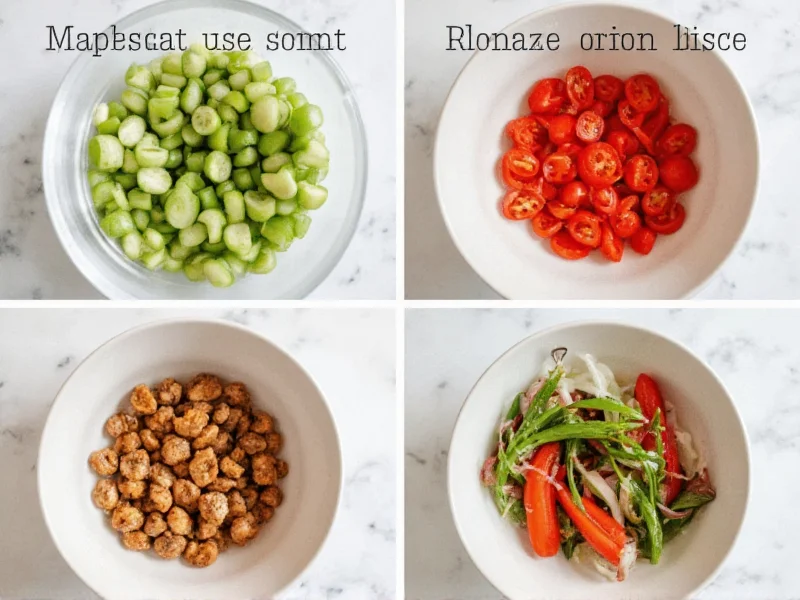Understanding Pepper and Onion Relish
Pepper and onion relish is a vibrant condiment made from finely chopped bell peppers, onions, vinegar, sugar, and spices. Its sweet-tangy profile with subtle heat makes it incredibly versatile in the kitchen. Unlike plain onion relish, the addition of peppers creates a more complex flavor profile that complements both mild and bold dishes.
Classic Applications for Pepper and Onion Relish
While many people associate pepper and onion relish primarily with hot dogs, its applications extend far beyond this classic pairing. The traditional uses form the foundation of how this condiment enhances everyday meals:
| Classic Use | Best Pairing | Application Tip |
|---|---|---|
| Hot dogs and sausages | All-beef hot dogs, bratwurst | Apply generously while sausage is still warm for maximum flavor absorption |
| Hamburgers and sliders | Beef patties, turkey burgers | Mix a spoonful into the patty or use as a topping with melted cheese |
| Sandwiches and wraps | Roast beef, turkey, ham | Spread on bread before adding meats for flavor foundation |
| Breakfast items | Eggs, breakfast sandwiches | Stir into scrambled eggs or top breakfast burritos |
Creative Culinary Applications
Expanding beyond traditional uses reveals pepper and onion relish's true versatility. Chefs and home cooks alike discover innovative ways to incorporate this condiment into diverse dishes. Consider these creative applications when exploring pepper and onion relish uses for everyday cooking:
Meat and Seafood Enhancements
Stir 2-3 tablespoons into meatloaf or meatball mixtures for added moisture and flavor complexity. Use as a glaze for grilled chicken by mixing with equal parts barbecue sauce. Top grilled salmon or shrimp with a spoonful for a sweet-tangy contrast that complements the natural richness of seafood.
Salads and Side Dishes
Transform ordinary potato salad by replacing some of the mayonnaise with pepper and onion relish. Add to coleslaw for an unexpected flavor dimension. Mix into macaroni salad or pasta salads for a bright, acidic component that cuts through heavier ingredients.
International Cuisine Adaptations
Pepper and onion relish works surprisingly well in global dishes. Use as a topping for Mexican street corn instead of traditional crema. Incorporate into taco fillings for pulled pork or carnitas. Add to Cuban sandwiches for an authentic touch. Stir into Asian stir-fries during the final minute of cooking for a sweet-savory element that complements soy-based sauces.
Cooking Techniques and Pairing Principles
Understanding how to maximize pepper and onion relish's potential requires knowledge of flavor pairing and cooking techniques. The vinegar content makes it an excellent deglazing agent for pan sauces after searing meats. When using in cooked dishes, add during the final stages of preparation to preserve its fresh flavor profile.
For homemade applications, consider these pairing principles when exploring various pepper and onion relish uses:
- Sweet elements balance the vinegar tang (try with honey or maple syrup)
- Acidic components enhance its brightness (lemon juice works well)
- Smoky flavors complement the pepper notes (chipotle peppers or smoked paprika)
- Creamy textures provide contrast (avocado, sour cream, or cheese)
Storage and Shelf Life Considerations
Proper storage significantly impacts how long you can enjoy your pepper and onion relish. Commercial varieties typically maintain quality for 12-18 months unopened. Once opened, refrigerate and use within 6-8 weeks for best flavor. Homemade relish should be consumed within 3-4 weeks when properly stored in airtight containers.
Freezing extends shelf life to 6-8 months, though texture may change slightly upon thawing. For optimal results when freezing, portion relish into ice cube trays, then transfer frozen cubes to freezer bags. This allows you to use only what you need while preserving freshness.
Homemade vs. Store-Bought Considerations
While store-bought pepper and onion relish offers convenience, homemade versions provide customization opportunities. Basic homemade relish requires just bell peppers, onions, vinegar, sugar, salt, and spices. The ratio of peppers to onions can be adjusted to personal preference, and additional ingredients like jalapeños or herbs can create unique variations.
When considering various pepper and onion relish uses in meal planning, homemade versions often have brighter, fresher flavors but require preparation time. Commercial products provide consistency and longer shelf life, making them practical for everyday use. Many cooks keep a commercial version on hand while making small batches of homemade relish for special occasions.
Practical Tips for Maximizing Flavor
To get the most from your pepper and onion relish, consider these practical tips:
- Let relish sit at room temperature for 15-20 minutes before serving to enhance flavor release
- Drain excess liquid when using in dishes where moisture content matters
- Use as a base for quick sauces by blending with mayonnaise or sour cream
- Add to Bloody Mary cocktails for a savory-sweet kick
- Spread on pizza before adding other toppings for flavor foundation











 浙公网安备
33010002000092号
浙公网安备
33010002000092号 浙B2-20120091-4
浙B2-20120091-4